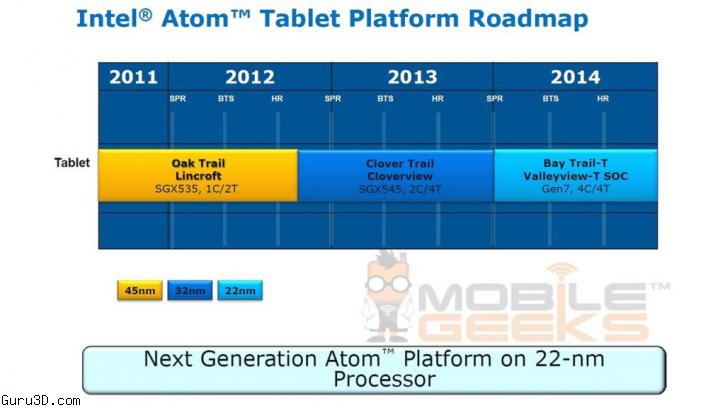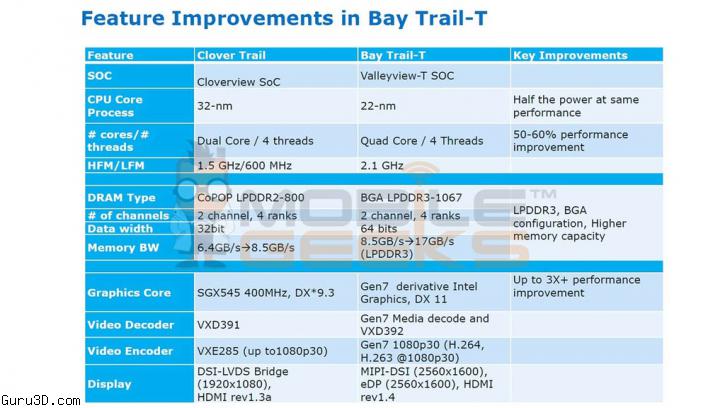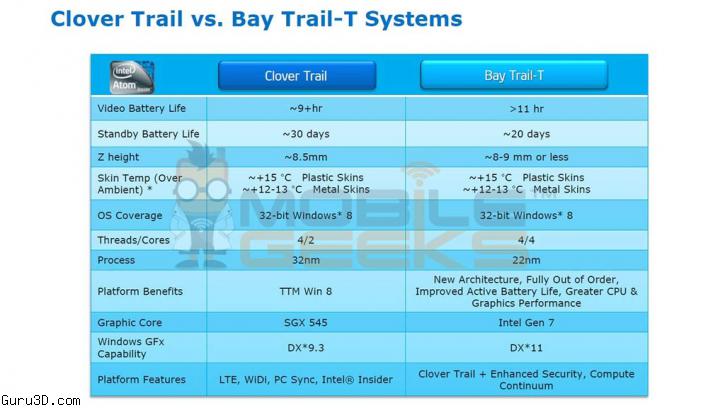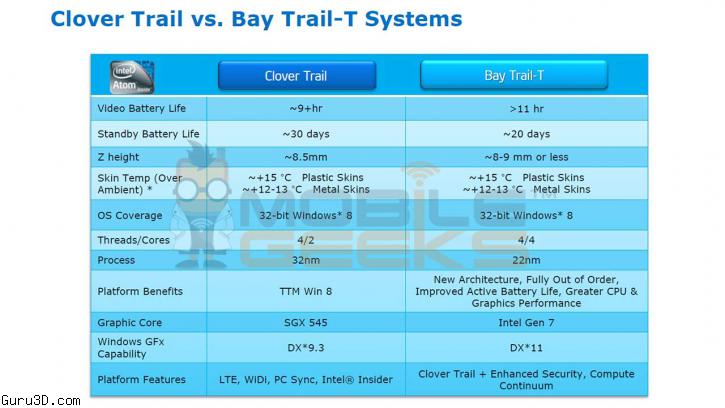Well now, a leaked Intel roadmap shows the company's shift to 22-nanometer architecture, quad-cores, HD 4000 graphics with DirectX 11 support, and an all-important increase in battery life. Bay Trail-T is the follow-on for Intel's Clover Trail platform, but with a number of improvements. First, it is based on 22-nanometer architecture as opposed to Clover Trail's 32-nanometer architecture, which, according to the roadmap, means half the power consumption.
The leaked Intel documents suggest that video battery life is up, from about 9 hours for Clover Trail to more than 11 hours for Bay Trail-T hardware. The number of cores have also been bumped from two to four, though since Intel has ditched Hyper-Threading the number of threads stays at four. Despite this, the core increases, combined with a clock speed boost from 1.5GHz to a far more respectable 2.1GHz, offer a 50 to 60 percent performance improvement. Bay Trail-T also offers support for 3D cameras and USB 3.0. The processor is also fully compatible with Windows 8. Powering the graphics side of the SoC is the HD 4000 chip found inside the Ivy Bridge processors, which offers DirectX 11 support, display resolutions up to 2,560 by 1,600 pixels, and boosts performance by at least three-fold. This puts Bay Trail-T well ahead of both Clover Trail and ARM's Cortex-A15 platform. Some of the information contained in this leaked roadmap was previously revealed in documents leaked back in August. I expect that Intel -- along with its hardware partners -- will start talking about Bay Trail-T hardware at CES 2013 in January.





